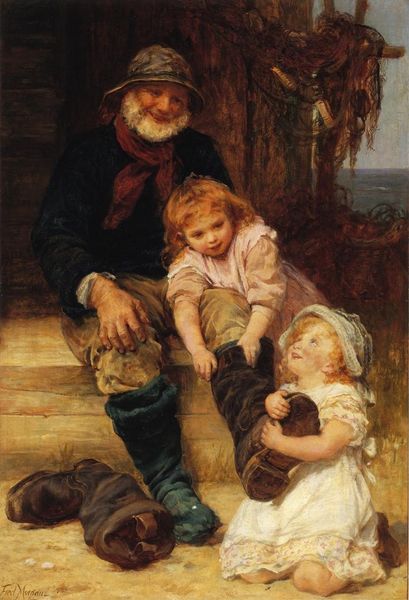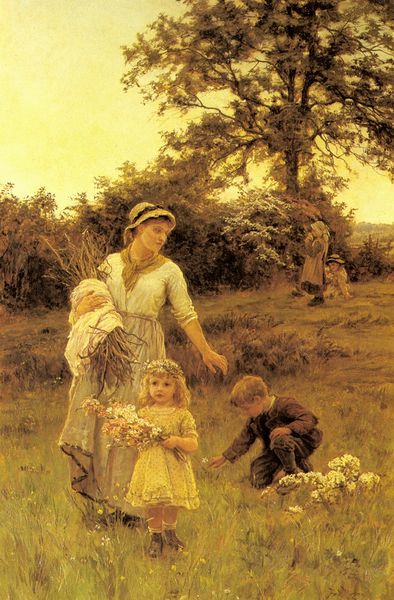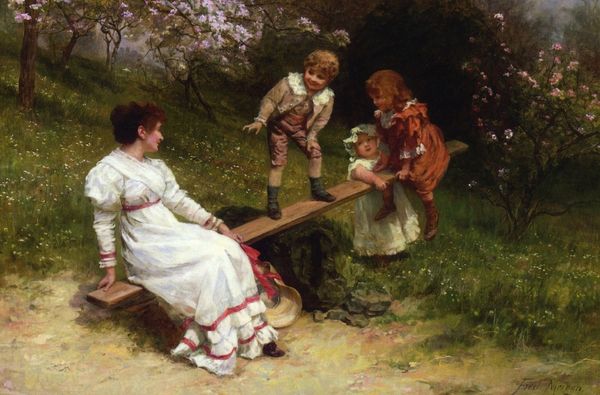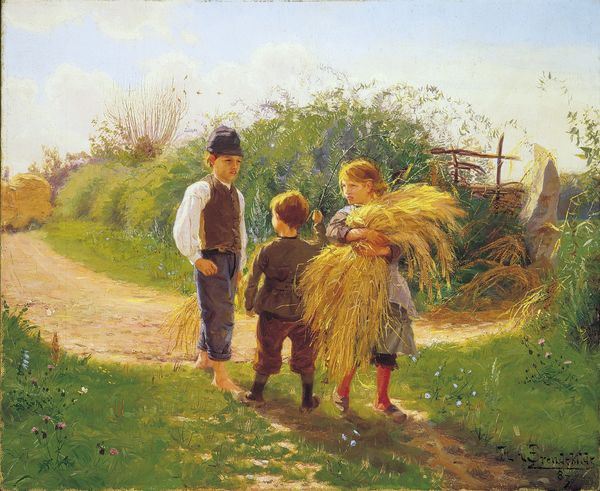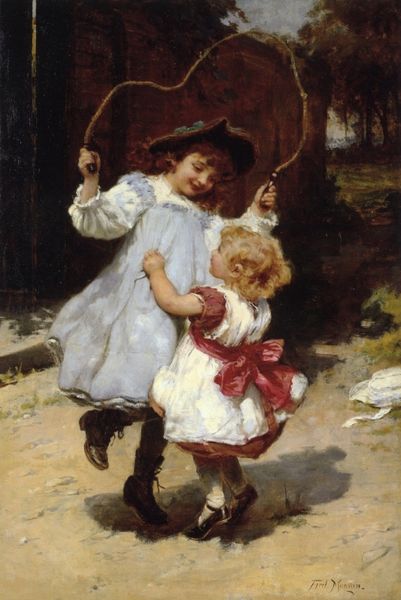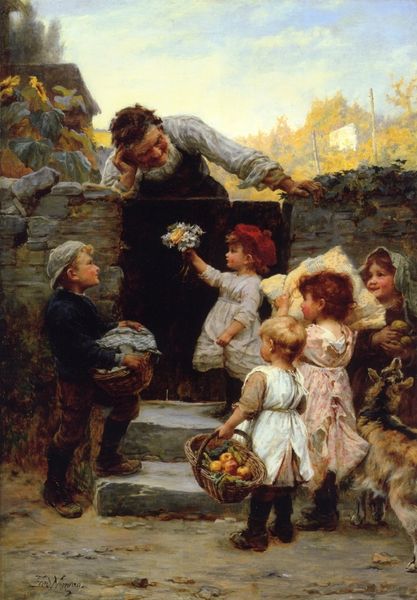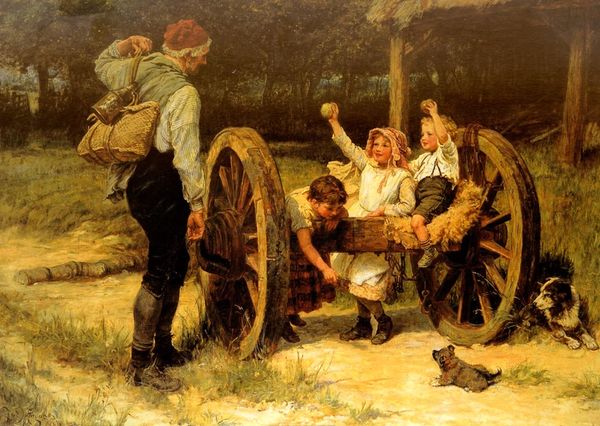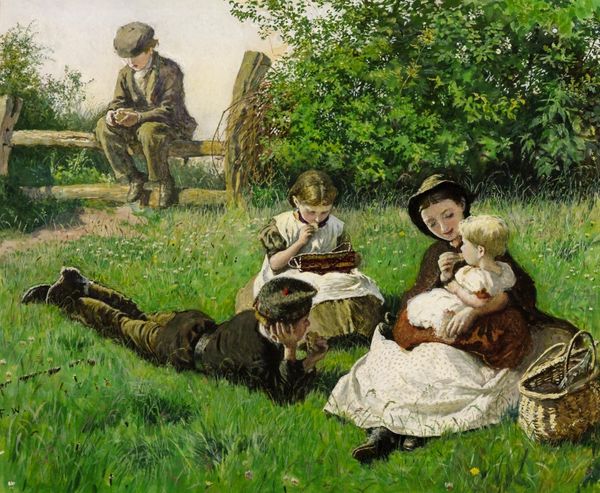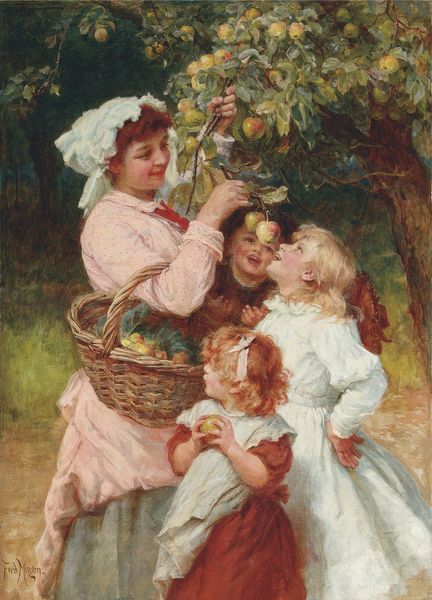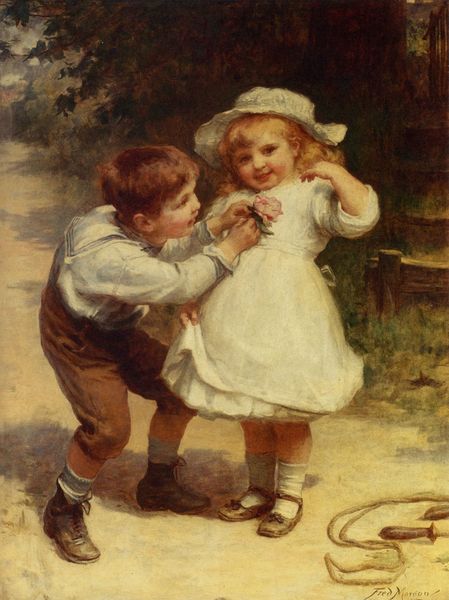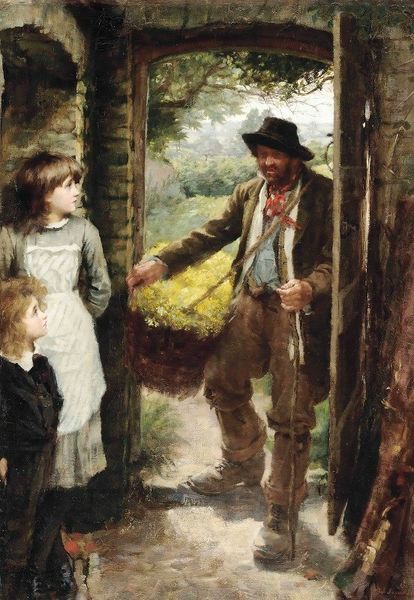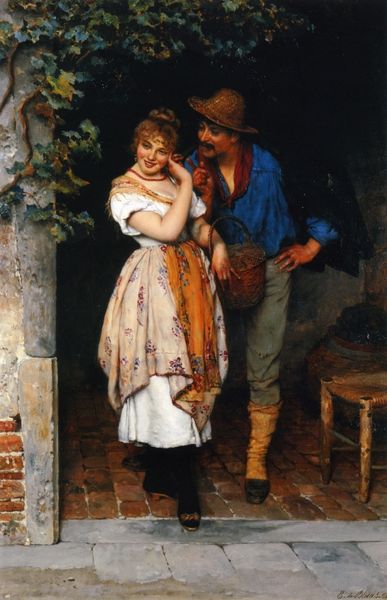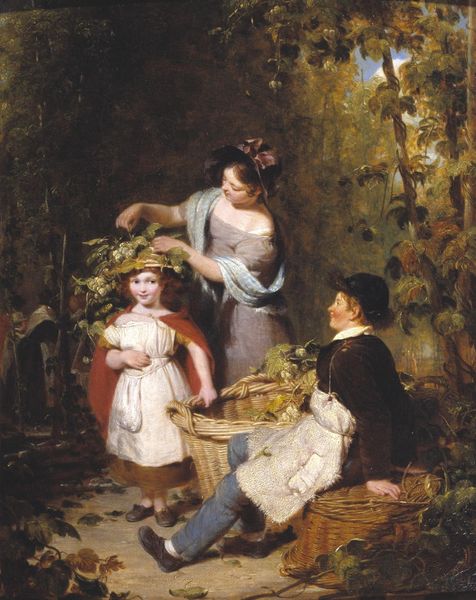
painting, plein-air, watercolor
#
portrait
#
gouache
#
narrative-art
#
painting
#
impressionism
#
plein-air
#
figuration
#
oil painting
#
watercolor
#
genre-painting
#
academic-art
#
watercolor
#
realism
Copyright: Public domain
Editor: So, here we have Frederick Morgan's "Off to the Fair," a painting that looks like it might be done in watercolor. There's this lovely scene of a bearded man surrounded by gleeful children. The whole image just radiates innocence and almost… manufactured joy. How do you interpret this work? Curator: This painting, with its idealized vision of childhood, really speaks to the social context of its time. The late 19th century saw a rise in sentimental genre painting, often glossing over the realities of Victorian life, especially for the working class. Considering that, how does this image of innocent merriment engage with, or perhaps evade, issues of class and gender? Editor: That's a sharp point. I hadn’t considered what it omits. So, the painting becomes not just about the scene itself, but about what it chooses not to show, the unseen labor that makes such carefree moments possible? Curator: Precisely. And who benefits from this portrayal? Images like these often served to reinforce idealized roles – the nurturing grandfather, the angelic children – masking potentially harsher realities, domestic labor, and gendered expectations that constricted women's lives, and poverty's toll. Editor: It’s almost propaganda then, but gentle propaganda. It creates a vision of family and innocence that perhaps never fully existed. What about the background, the depiction of nature, and its impact? Curator: The soft, idyllic background—a field bathed in sunlight—further reinforces this escapist quality. It evokes a sense of pastoral bliss, distancing itself from the industrial realities that were rapidly transforming society. By focusing on idealized images, did these artworks perhaps provide a comforting, if ultimately deceptive, narrative? Editor: I see. It's a reminder to look beyond the surface beauty and consider the underlying social and historical forces at play. It's been enlightening to consider its relationship to a bigger, perhaps obscured reality. Curator: Indeed. Examining art through an intersectional lens – considering gender, class, and historical context – allows us to see beyond the surface and uncover the complex narratives embedded within seemingly simple scenes. There's always a counter-narrative present.
Comments
No comments
Be the first to comment and join the conversation on the ultimate creative platform.
